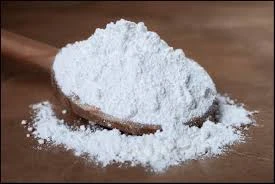
Exploring the Benefits of Soy Lecithin as a Natural Emulsifier in Food Products
The Role and Benefits of Soy Lecithin Emulsifier
Soy lecithin is a versatile and widely used emulsifier derived from soybeans. It plays a crucial role in various food products and nutritional formulations, enhancing texture, stability, and shelf life. This article delves into the characteristics, benefits, and applications of soy lecithin as an emulsifier.
Understanding Emulsifiers
Emulsifiers are substances that help mix two normally unmixable liquids, such as oil and water. They contain both hydrophilic (water-attracting) and hydrophobic (water-repelling) elements, which enables them to stabilize emulsions. In culinary practices, emulsifiers create smooth textures and prevent the separation of ingredients. Soy lecithin, rich in phospholipids, is one of the most widely used emulsifiers in food science.
Extraction and Composition
Soy lecithin is extracted from crude soybean oil during the refining process. The extraction involves de-odorization and degumming, producing a product that is pale yellow to brown in color and typically has a mild flavor. The primary components of soy lecithin include phosphatidylcholine, phosphatidylethanolamine, and phosphatidylinositol, which are essential for its emulsifying properties. These phospholipids stabilize the emulsion by reducing the surface tension between the oil and water phases.
Benefits of Soy Lecithin
1. Health Benefits Soy lecithin is a source of essential fatty acids and choline, an important nutrient for brain health. Incorporating it into your diet may support cognitive function and overall health.
2. Natural Emulsifier As a plant-derived product, soy lecithin is considered a natural emulsifier, making it suitable for health-conscious consumers. It provides an alternative to synthetic emulsifiers, which can be a concern for those opting for natural food products.
3. Improved Texture and Taste In baked goods, soy lecithin enhances texture, leading to products that are softer and have a more pleasant mouthfeel. It can improve the taste by ensuring that flavors are uniformly distributed throughout the product.
soy lecithin emulsifier

4. Extended Shelf Life By preventing the separation of ingredients, soy lecithin can help extend the shelf life of certain products. It reduces the likelihood of spoilage by maintaining stability in food items such as dressings, sauces, and bakery goods.
5. Cost-Effective Compared to other specialty emulsifiers, soy lecithin is relatively inexpensive and readily available, making it an economical choice for manufacturers and food processors.
Applications in Food Industry
Soy lecithin has a wide array of applications in the food industry. Common uses include
- Baking It is often added to bread and pastries to improve dough handling, texture, and to promote moisture retention. - Confectionery In chocolates and candies, soy lecithin acts as a release agent and helps achieve a smooth and glossy finish. - Dressings and Sauces Soy lecithin helps stabilize oil-in-water emulsions, ensuring that vinaigrettes and mayonnaise remain creamy and well-blended. - Dairy Products It is used in ice creams and yogurts to improve consistency and mouthfeel while preventing ice crystal formation.
Use in Non-Food Products
Beyond the culinary realm, soy lecithin is employed in cosmetics, pharmaceuticals, and nutritional supplements. Its properties aid in creating smooth formulations and improving the delivery of active ingredients, making it a valuable component in various industries.
Conclusion
Soy lecithin is a powerful emulsifier that offers numerous benefits, from enhancing food texture to improving health outcomes. Its natural origin and efficacy make it a preferred choice among manufacturers striving for quality in food production. As consumers continue to seek out natural ingredients and healthier options, the demand for soy lecithin is likely to grow, solidifying its place as an indispensable emulsifier in the food industry and beyond.
-
Understanding Synthetic Rubber OptionsNewsApr.27,2025
-
Trichloroisocyanuric Acid: Essential for Clean and Safe WaterNewsApr.27,2025
-
Sodium Dichloroisocyanurate: Key to Safe Water TreatmentNewsApr.27,2025
-
Sodium Acid Pyrophosphate: Essential in Modern Food ProcessingNewsApr.27,2025
-
Essential Water Treatment ChemicalsNewsApr.27,2025
-
Denatured Alcohol and Its Industrial UsesNewsApr.27,2025
-
The Versatile Uses of Sodium BicarbonateNewsApr.24,2025
Hebei Tenger Chemical Technology Co., Ltd. focuses on the chemical industry and is committed to the export service of chemical raw materials.
-

view more DiethanolisopropanolamineIn the ever-growing field of chemical solutions, diethanolisopropanolamine (DEIPA) stands out as a versatile and important compound. Due to its unique chemical structure and properties, DEIPA is of interest to various industries including construction, personal care, and agriculture. -

view more TriisopropanolamineTriisopropanolamine (TIPA) alkanol amine substance, is a kind of alcohol amine compound with amino and alcohol hydroxyl, and because of its molecules contains both amino and hydroxyl. -

view more Tetramethyl Thiuram DisulfideTetramethyl thiuram disulfide, also known as TMTD, is a white to light-yellow powder with a distinct sulfur-like odor. It is soluble in organic solvents such as benzene, acetone, and ethyl acetate, making it highly versatile for use in different formulations. TMTD is known for its excellent vulcanization acceleration properties, which makes it a key ingredient in the production of rubber products. Additionally, it acts as an effective fungicide and bactericide, making it valuable in agricultural applications. Its high purity and stability ensure consistent performance, making it a preferred choice for manufacturers across various industries.











